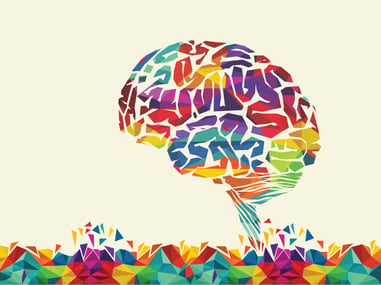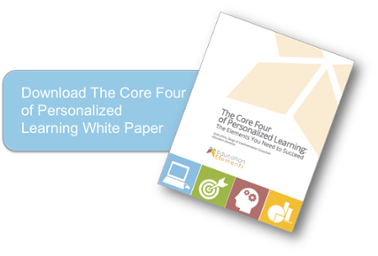It must be hard to be a cognitive scientist. You spend considerable time meticulously conducting research, designing experiments, summarizing findings, and publishing your work, all in the noble pursuit of furthering human understanding of how the mind works. But that's not enough. In fact, that’s the easy part.The hard part: getting millions of teachers (there are 3.4 million in the U.S. alone) to learn about and act on your findings.
Still, I’m finding crucial lessons from cognitive scientists about how we can best facilitate learning.
A few of my recent favorite cognition articles:
- Daniel Willingham has published several best-selling books and is featured everywhere from The Atlantic to the American Federation of Teachers column, “Ask the Cognitive Scientist”
- The American Psychological Association has published a 20-item list list of principles for K-12 educators that I would recommend keeping on all teachers’ desks
- Deans for Impact, who put on an excellent session at Education Elements' Personalized Learning Summit this spring, has a wonderfully distilled guide for teachers on “The Science of Learning”
When I read up on all of the cognitive principles I'm supposed to take into consideration when teaching, I feel both excitement (This makes so much sense!) and desperation (There’s so much to know and do!). I recently felt that high and low as I was revisiting Cognitive Load Theory (CLT) in a new report from MIT and reflecting on what takeaways we should apply in the personalized learning community.
CLT suggests that your brain is impacted in its ability to process new information in part due to limits in working memory. Working memory, as Willingham describes it, is the “mental horsepower” you have available to undertake new tasks. According to CLT, using that horsepower is dependent on the underlying schema stored in your long-term memory; in Willingham’s example, that would be the “database” of facts and relationships you have stored away in your mind.

The larger and more varied your schema, the more quickly you can process new information. For example, you’ll use less “horsepower” trying to solve problems like 6x5 or 100/x = 20 if you have diverse facts and strategies tucked away in your mental “database.”
Makes sense. But what does all this mean in practice if I’m a teacher designing a lesson today? Here’s a handy thought from that MIT paper:
“CLT suggests -- and the evidence supports -- the idea that novices should be given [step-by-step] examples rather than open-ended problems. However, for experts, open-ended problems work better, because experts have more advanced schema at their disposal.”
A great start, but to make it even more concrete, let’s try a schema Education Elements uses quite often in instructional model design: the Core Four of Personalized Learning.
- 1. Data-driven Decisions: Before diving into a lesson or at the beginning of a unit, I would want to investigate what my students do and do not know -- i.e., the depth and range of their available “database” on what I’m going to teach. This requires me to think deeply about the knowledge they need to be successful and then to design diagnostic or formative assessments that help me determine what they already understand. I can use data from those assessments to begin to design instruction for small groups or individuals.
- 2. Targeted Instruction: There are bound to be many situations in which all students could use a refresher, or could benefit from shared argument, discussion, and debate. A high-quality, interactive lecture is a great tool in such scenarios. But perhaps equally likely is the fact that some students function as novices in their exposure to a concept or skillset while others arrive closer to an expert level. In the latter case, targeted instruction can be used to provide more step-by-step to novices and“open-ended problems” that challenge the experts.
- 3. Integrated Digital Content: If you’re leveraging targeted instruction in part to allow for multiple learning spaces in class, you also need to consider how best to use time for students who are not engaged in direct instruction. Here digital content and tools can serve as essential resources for both novices and experts. You might assign some basic skill-building exercises for one group of students while challenging another working in pairs, or set up mixed groups with strong collaborative protocols as students generate ideas to then test with you in a small group. In either case, considering the level of cognitive load placed on students can help determine the level of “productive struggle” students ought to work through with digital (or even offline) content without your direct assistance.
- 4. Student Ownership and Reflection: Students can improve in their own self-awareness and critical thinking when they work with a teacher to determine what they need to know, how they’re going to get there, and how they’re progressing along the way. Particularly at the secondary level, engaging students in the cognitive science behind effective teaching and learning strategies can be a powerful reflection too. Make It Stick is a great book for doing so.
The strategies that make up Education Elements’ Core Four of personalized learning offer one schema that educators can use to respond to the messy challenge of facilitating student learning. There are other ways to think about teaching and learning, of course, but whatever path you choose it’s worth keeping up with the research and schema that cognitive scientists bring to the K-12 field. With enough exposure and reflection, your “database” of knowledge on how we learn might become the powerful main engine that powers your designs of learning experiences for students.





